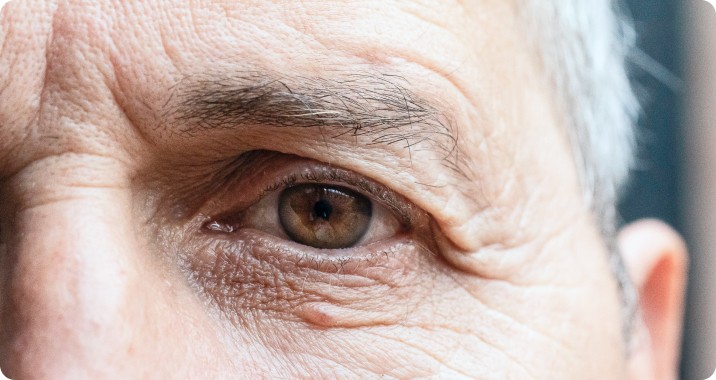Ptosis
Ptosis is a condition that occurs when one or both upper eyelids droop and the edge of the upper eyelid falls towards or over the pupil. Ptosis is usually caused by stretching or thinning of the tendon between the muscle that raises the eyelid and the eyelid itself. With stretching or thinning, the muscle that normally raises the eyelid has to work harder to lift it. This leads to symptoms of eyelid and forehead muscle fatigue, and eyelid heaviness. Other, less common causes of ptosis are nerve or muscle damage from any cause, various types of eyelid surgery, infection, muscle weakness, and systemic diseases such as stroke and tumors behind the eye, myasthenia and thyroid disorders. Children can be born with congenital ptosis where the muscle is abnormally stiff and does not function well. This condition usually lasts until it is surgically corrected.
To correct ptosis, the surgeon needs to make an incision or cut the skin of the upper eyelid in order to reach the muscles and tendons. Under certain circumstances it can be combined with the operation known as blepharoplasty when fat and skin removal is an added goal of surgery. These surgeries can be performed under local anesthesia in our procedure room and can take from one to one and a half hours. Some bruising and swelling is expected after surgery, which can last about 1 -2 weeks depending on the patient’s own natural healing ability.
If the muscle is not strong enough to lift the eyelid, the surgeon must create a “sling” by connecting the eyelid to the frontalis muscle in the forehead.


The droopy eyelid is like a curtain that blocks the view. Patients with ptosis frequently notice that they have less peripheral or side vision, particularly when looking up. Patients with ptosis also report that droopy eyelids make them look and feel “tired.” The more severe the ptosis, the greater the peripheral vision loss. When the eyelid is raised, either manually by hand, or surgically through one of the approaches described above, the blockage is removed and the eye can see. Ptosis surgery only corrects vision loss due to droopy eyelids. It does not improve blurred vision caused by problems inside the eye, or by visual loss caused by neurological disease behind the eye. To prevent amblyopia or poor visual development in children born with congenital ptosis, the surgery needs to be done early in life.
Patients can live with ptosis and blocked or reduced peripheral vision; however, there is no reliable method to correct ptosis on a permanent basis without surgery. Patients who are too sick to have surgery may find relief by lifting their eyelid with their fingers or tape in order to see. The eyelid will droop again as soon as this temporary lifting is stopped.



